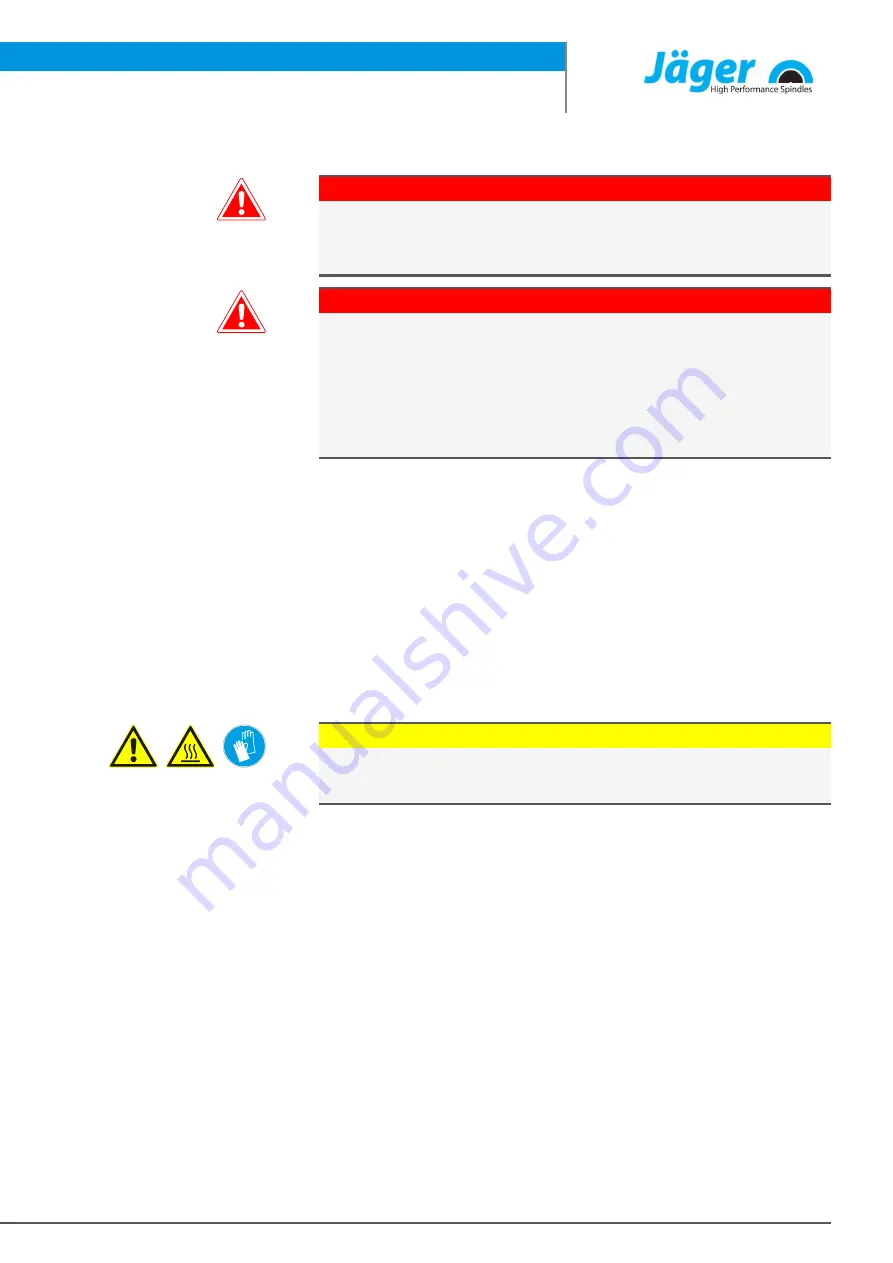
Tools for high speed cutting
Item no. 10302079, Revision 12
31 ( 40 )
11
Tools for high speed cutting
DANGER: Due to flying parts.
If the wrong direction of rotation is used, the tool is damaged when load is
applied. The centrifugal forces cause the broken part to be flung out.
u
Only use tools with the correct direction of rotation for the HF spindle.
DANGER: Due to flying parts.
If the speed is selected incorrectly, the HF spindle or the tool may be de-
stroyed and their fragments may be flung out.
u
Note the maximum speed for the selected tool.
u
Note the maximum speed for the HF spindle.
u
The maximum permissible speed of the HF spindle for commissioning /
processing is always the
lowest
specified speed.
Ü
Only use tools that are technically sound.
Ü
Only use tools with a tool shank diameter that corresponds to the inner di-
ameter of the collet. For example, do not use shanks with a diameter of 3
mm in collets for 1/8” (=3.175 mm).
Ä
Also see the Technical Specifications
Ü
Only use tool shanks with a diameter tolerance of h6.
Ü
Do not use tool shanks with a clamping surface (e.g. Weldon).
Ü
Only use a balanced tool.
Ä
DIN ISO 1940, balance grade 2,5 .
11.1
Broken-off tool
CAUTION: Risk of burns.
The broken-off tool may be hot.
u
Use gloves to protect against injury.
Remove the remains of the broken-off tool from the collet using the ejector
pin from the service set.
Proceed as follows:
Ü
Remove the collet from the shaft of the HF spindle.
Inside the collet there is a stop screw with a hole.
Ü
Insert the ejector pin through this hole.
Ü
Push the broken-off tool forward out of the collet using the ejector pin.
Ü
Clean the collet.
Ü
Insert the collet back into the HF spindle shaft.










































